Discover 9 hidden attractions, cool sights, and unusual things to do in Coventry (United States). Don't miss out on these must-see attractions: General Nathanael Greene Homestead, Paine House, and Coventry Public Library. Also, be sure to include Interlaken Mill Bridge in your itinerary.
Below, you can find the list of the most amazing places you should visit in Coventry (Rhode Island).
Table of Contents
General Nathanael Greene Homestead
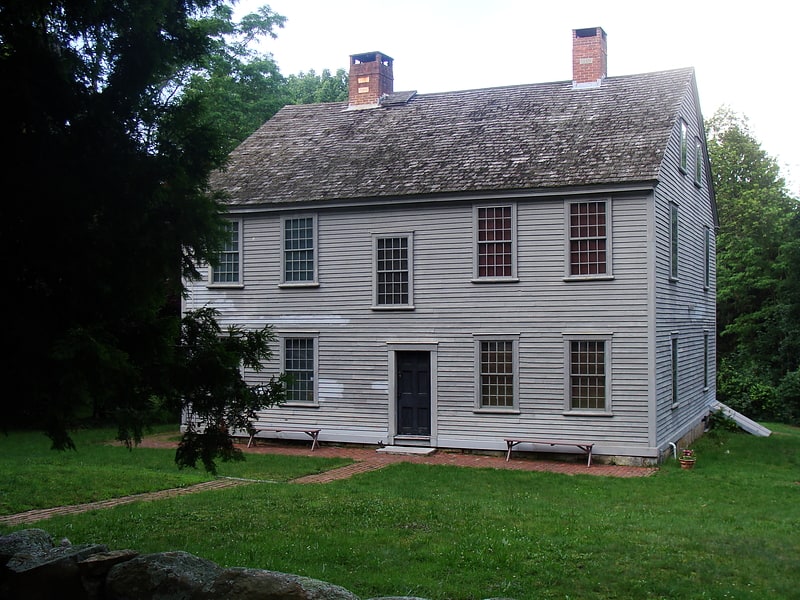
Museum in Coventry, Rhode Island. The General Nathanael Greene Homestead, also known as Spell Hall, is a historic house at 20 Taft Street in Coventry, Rhode Island. It was the home of American Revolutionary War general Nathanael Greene from 1770 to 1776, and was owned afterwards by his brother Jacob Greene and his wife Margaret. The house is owned and operated by the General Nathanael Greene Homestead Association, a non-profit organization, and was opened as a museum in 1924.[1]
Address: 50 Taft St, 02816-5314 Coventry
Paine House
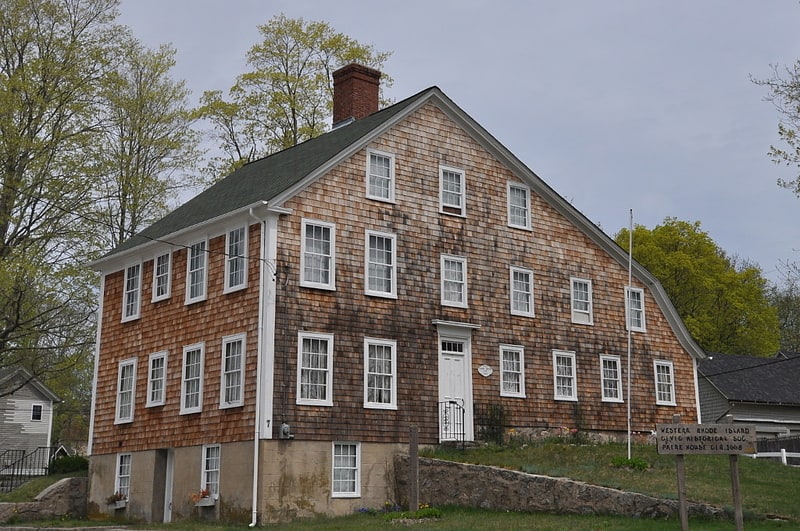
Museum in Coventry, Rhode Island. The Paine House Museum is an historic house at 7 Station Street in the village of Washington in the town Coventry, Rhode Island. The oldest portion of this large 2+1⁄2-story wood-frame house may have been built as early as 1691 by Samuel Bennett, who was known to operate a sawmill on the nearby Pawtuxet River. The house was significantly enlarged c. 1748 by Francis Brayton. His son, Francis Jr. was granted a license to operate a tavern on the premises in 1785. The property was acquired by the Paine family in 1866, whose descendants gave it to the Western Rhode Island Civic Historical Society in 1953.
The house has been furnished to reflect the Colonial era, and is now operated by the society as a historic house museum. Visitation is from May through September on Saturdays.
The house was listed on the National Register of Historic Places in 1974.[2]
Address: 7 Station St, Coventry
Coventry Public Library
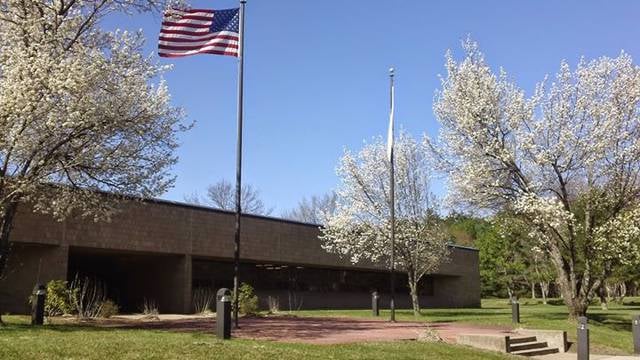
Library
Address: 1672 Flat River Rd, 02816 Coventry
Interlaken Mill Bridge
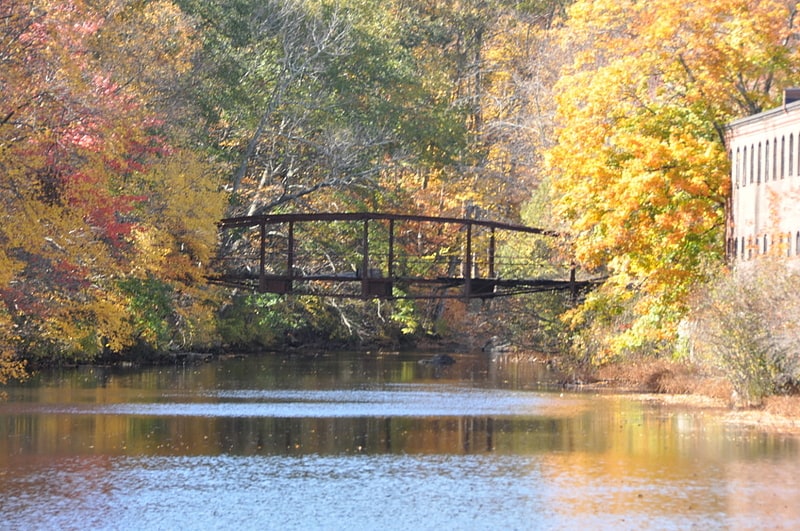
Bridge in Scituate, Rhode Island. The Interlaken Mill Bridge is an historic bridge spanning the Pawtuxet River at the site of the former Arkwright and Interlaken mill complexes in Coventry, Rhode Island. The lenticular pony truss bridge was built in 1885 by the Interlaken Corporation to provide a direct connection between the mill sites, having recently acquired the Arkwright property. The trusses were manufactured by the Berlin Iron Bridge Co. of Berlin, Connecticut. The bridge is a single span measuring 92 feet in length and just under 19 feet in width, resting on stone abutments.
The bridge was listed on the National Register of Historic Places in 1978. It is the only known lenticular pony truss bridge in Rhode Island.
As of 2015, the bridge is completely closed off to the public and no longer maintained. It has fallen into severe disrepair and is structurally unsound and unsafe to cross. With the closing and abandonment of the facilities on the south side of the river, and the eventual reclamation of nature to the location, the south side of the bridge leads only to thick woods and brush.[3]
Pawtuxet Valley Dyeing Company
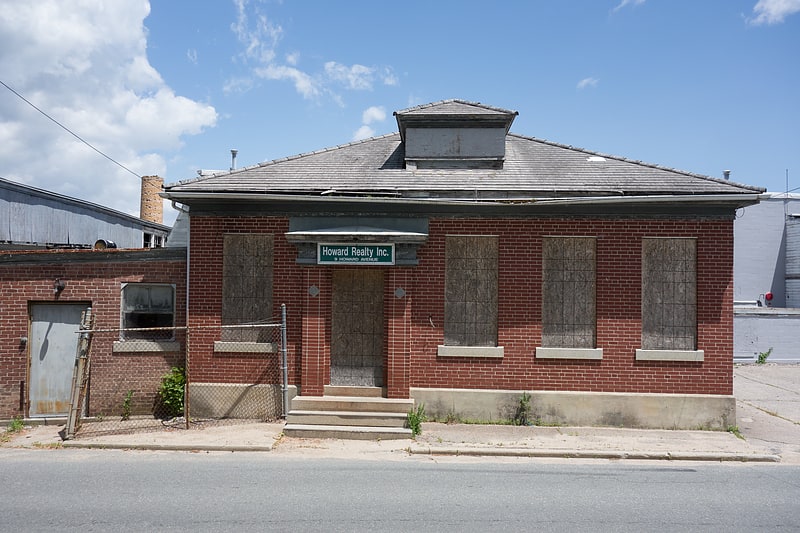
Building complex. The Pawtuxet Valley Dyeing Company was a historic mill complex at 9 Howard Avenue in the town of Coventry, Rhode Island. The complex included three buildings: the main mill building and two pump houses, as well as the dam which impounds the Pearce Mill Pond, and the tailrace which evacuates water from the mill into the North Branch Pawtuxet River. The main mill was an irregularly shaped complex of structures, which grew from the original Pearce Brothers Woolen Mill, a two-story rubble-stone structure that predates 1859, and has been extended in all directions. Most of the additions were made in the first two decades of the 20th century. The dam, about 100 feet long, was an earth-fill structure faced in fieldstone and capped in 20th-century concrete, with a modern spillway. The tailrace was a trench lined with cut stone which exited from under the original mill building. The mill was established by Joseph W. Pearce, an English immigrant, and carded and spun wool. The March 11, 1916 Fibre & Faric, page 29, a trade publication, list William Waterhouse and the President of the Royal Chemical Co. and The Pawtuxet Valley Dyeing Co. The January 1918 edition of the trade publication "Textile Colorist", page 23, list the obituary for William Waterhouse and states that he was the president of The Pawtuxet Valley Dying Company beginning in 1907. The November 13, 1920 edition of Fibre and Fabric, a trade publication, lists James B. McDowell as president and J.B. Bennett as treasurer and general manager. A brief notice states that the company added a new machine, and is "quite busy with orders".
The mill complex was added to the National Register of Historic Places in 2005.
in December 2020, due to the now long abandoned structure's dangerously decrepit and collapsing condition and local youth and homeless population continually breaking in, the building was named a public hazard and completely torn down.[4]
Wilson–Winslow House
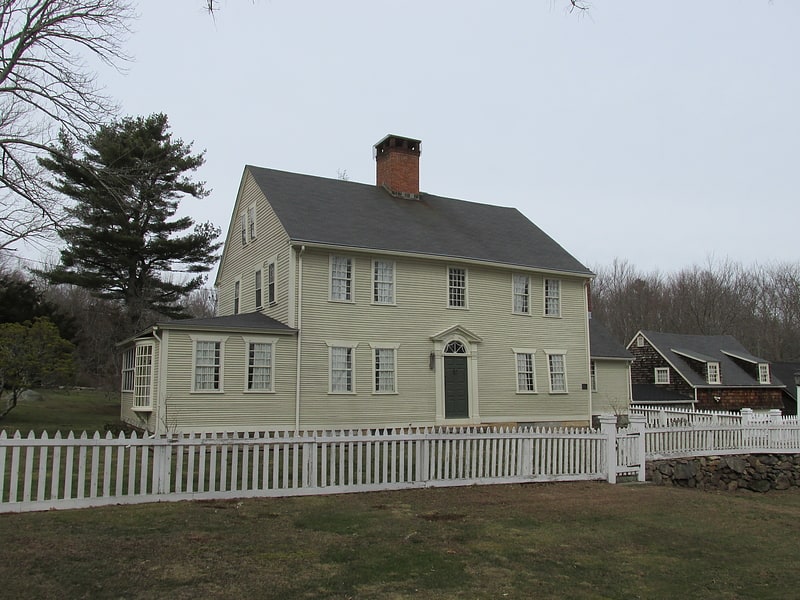
The Wilson–Winslow House is a historic house in Coventry, Rhode Island. The main block of this 2+1⁄2-story wood-frame house was built c. 1812, either by Joseph Wilson or his son Israel. The house is a high-quality example of vernacular rural Federal architecture, which was altered in the 1930s as a country retreat for the Winslows, a Providence family.
The house was listed on the National Register of Historic Places in 1993.[5]
Isaac Bowen House
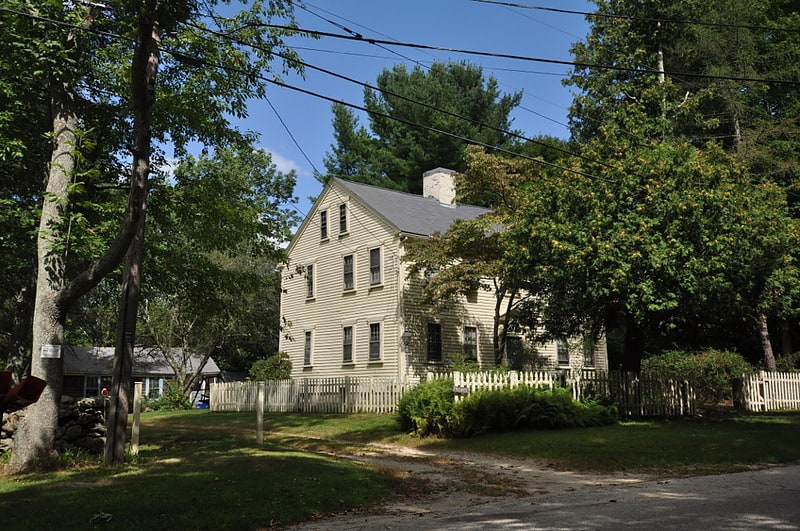
The Isaac Bowen House is an historic house in Coventry, Rhode Island. The 2+1⁄2-story center-chimney wood-frame house, built c. 1750, stands on Maple Valley Road, near its junction with Rhode Island Route 102. The property, more than 3 acres extending to the road junction, is adjacent to the Audubon Society's George B. Parker Woodland Sanctuary, and is also owned by the society. The house was built by Isaac Bowen, a member of the locally prominent Bowen family, and is the only Bowen house to survive from that time. The house now serves as home to the Parker Sanctuary's caretaker.
The house was listed on the National Register of Historic Places in 1980.[6]
Joseph Briggs House
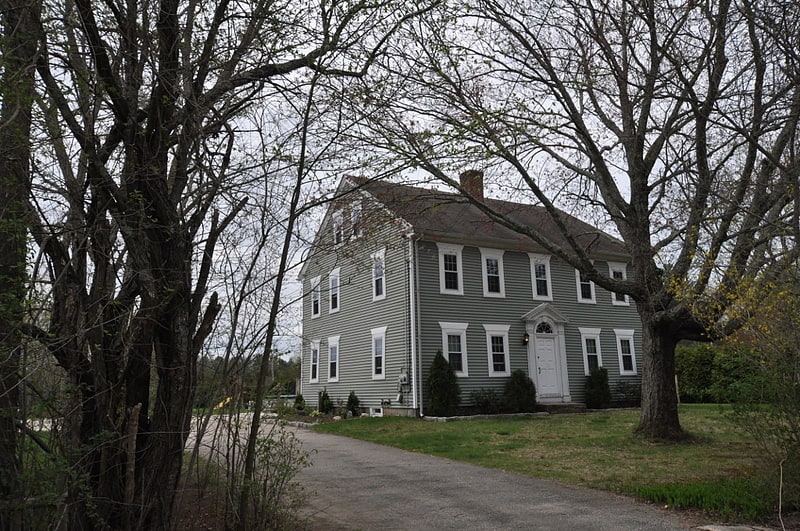
The Joseph Briggs House, also known as the Coventry Town Farm, is a historic house in Coventry, Rhode Island. The main block of the house, a 2+1⁄2-story wood-frame structure, was built c. 1790 by Joseph Briggs, and the property was purchased from his heirs in 1851 by the town for use as a poor farm. The town added a two-story ell to the rear of the house to provide additional housing space. The property is one of the few such poor farms to remain relatively intact. The farm was closed in the 1930s, after which the property fell into decline. It has since been rehabilitated as a two-family residence.
The house was listed on the National Register of Historic Places in 1987.[7]
William Waterman House

The William Waterman House is a historic house in Coventry, Rhode Island. It is located on the west side of Rhode Island Route 102, a short way north of its junction with Bowen Hill Road. The 2+1⁄2-story wood-frame house was built, probably before 1793, by William Waterman, a descendant of one of Coventry's earliest European settlers. It is five bays wide, with a large central chimney. Its entry is the most elaborate part of the main facade, flanked by paired pilasters and sheltered by a barrel-vaulted portico with triangular pediment.
The house was listed on the National Register of Historic Places in 1980.[8]